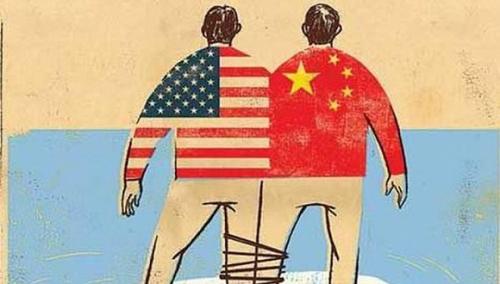NEW YORK, Jan. 15 (Xinhua) -- The Chinese are not thrilled about their entanglement with the U.S. economy, any more than Donald Trump is, but like a quarreling couple, the two nations have kept dancing together out of mutual self-interest, a U.S. expert has said.
Farok Contractor, a distinguished professor at Rutgers Business School, made the remarks in an article posted on his website Saturday.
According to professor Contractor's research, adding up the numbers for exports as well as foreign direct investment (FDI) between China and the U.S., the maximum number of jobs created by such activities in China is between 17.79 and 17.99 million, while the number in the U.S. is about 1.6 million.
Besides jobs, other consequences of the two nations' intertwined economy are also too important to be neglected.
Many Americans blame the United States' massive trade deficit on China. However, what will happen to the U.S. consumers if the country replaces Chinese imports with U.S. manufacturing?
Based on the two countries' relative economic data of 2016, Contractor calculated that U.S. consumers would pay an additional cost of 295.17 billion U.S. dollars, or 2,380 dollars per household, on consumption in 2016.
Furthermore, the above estimate is only for consumer products and does not include U.S. imports of industrial output from China.
Policy shifts also have unforeseen consequences and knock-on effects, such as inflation-which has been quiescent for the past decade, but could be reignited by an additional burden of 295 billion dollars.
The Chinese government plowed most of their surpluses back into U.S. government Treasury bonds and securities, totaling 1.2-1.8 trillion dollars.
"It may not matter much, therefore-at least on a year-to-year basis-if the trade deficits suffered by the U.S. against China, or the rest of the world, are compensated by foreigners plowing their trade surplus money back into U.S. investments," said Contractor.
Trump alleges that the loss of U.S. jobs is "the greatest theft in the history of the world." This assertion is misleading and true only in very small part.
For every one U.S. job lost through international trade (1980-2016), informed analysts, such as the Wharton School, conclude that three or four jobs have been lost because of automation, robotics, information technology, and other productivity boosters.
If China did not exist on the planet, other low-wage nations, such as Vietnam, India, or Bangladesh, would fill its place. Hundreds of millions are willing to work for less than one dollar per hour.
Hence, the Trumpian proposal to bring jobs "back to the US" is feasible, but economically non-viable. Hundreds, perhaps thousands, of Chinese factories facing rising wages and a shortage of skilled workers (following China's one-child population policy) have themselves already taken the initiative to shut down operations in China and have relocated to Vietnam, Bangladesh, or other nations.
Should a Trump administration actually carry out its threats to levy a 45 percent tariff on Chinese products, production is unlikely to return to the U.S. to any significant degree. Other nations such as India, Lesotho, and Bangladesh, will fill the breach.
However, the resulting disruption of global value chains would add costs to the tune of hundreds of billions per year and increase prices for U.S. buyers by hundreds of dollars per capita.
In recent years worries about Chinese investment in the U.S. are raising as the amount increases rapidly.
Chinese companies invested a record 45.6 billion dollars in the U.S. economy in 2016, which are triple the amount of 2015 and a tenfold increase of annual investment just five years ago, according to Rhodium Group.
Contractor believed that the Trump administration need not be greatly alarmed about this for two salient reasons.
Firstly, the single biggest Chinese investments were in innocuous sectors such as real estate, hospitality, and business and financial services where proprietary technology is not an issue.
Secondly, even in sensitive sectors such as computer technology and life sciences, the White House-guided Committee on Foreign Investment in the U.S. (CFIUS) can, and has, embargoed foreign investment in sectors deemed sensitive or where the intelligence services or Commerce Department has indicated danger to the continued competitiveness of American firms.
In fact, the cumulative or historical dollar values show that U.S. FDI value in China is at 228 billion dollars, compared with 90 to 100 billion dollars for the value of Chinese FDI investment in the U.S..
"American firms, as far as FDI is concerned, have much more to lose in the event of a commercial dispute between the two nations," he said.
On the Chinese front, for the past 25 years, the Chinese government has looked on the U.S. as its principal foreign market, with up to 18 million of its workers directly or indirectly involved with U.S. trade and FDI. And they have every incentive for keeping the U.S. consumer happy and the U.S. economy going strong: simply put, it is a matter of self-interest.
The two great nations, which account for 40 percent of world GDP and 23 percent of the world's population, need each other, Contractor concluded.




 A single purchase
A single purchase









